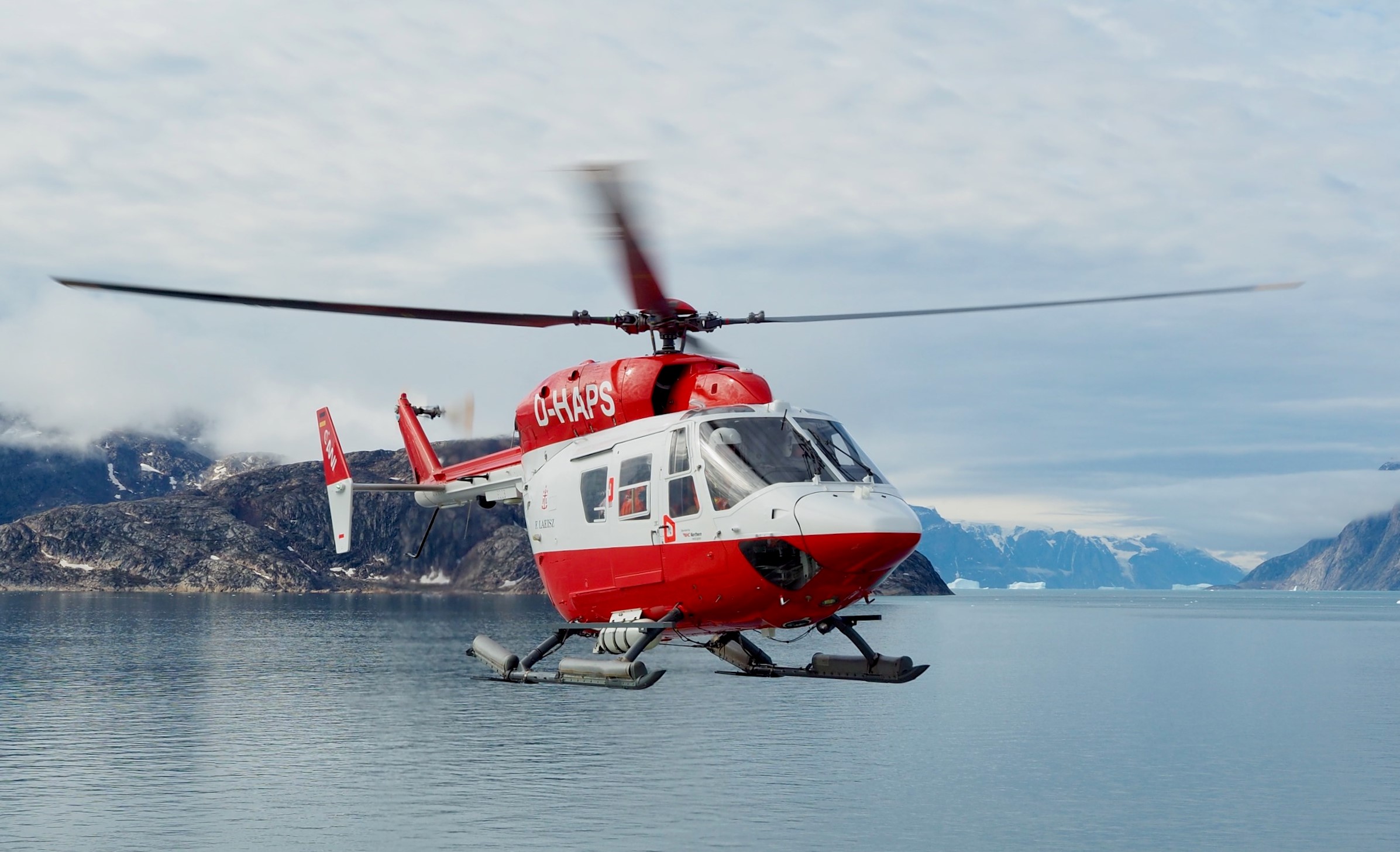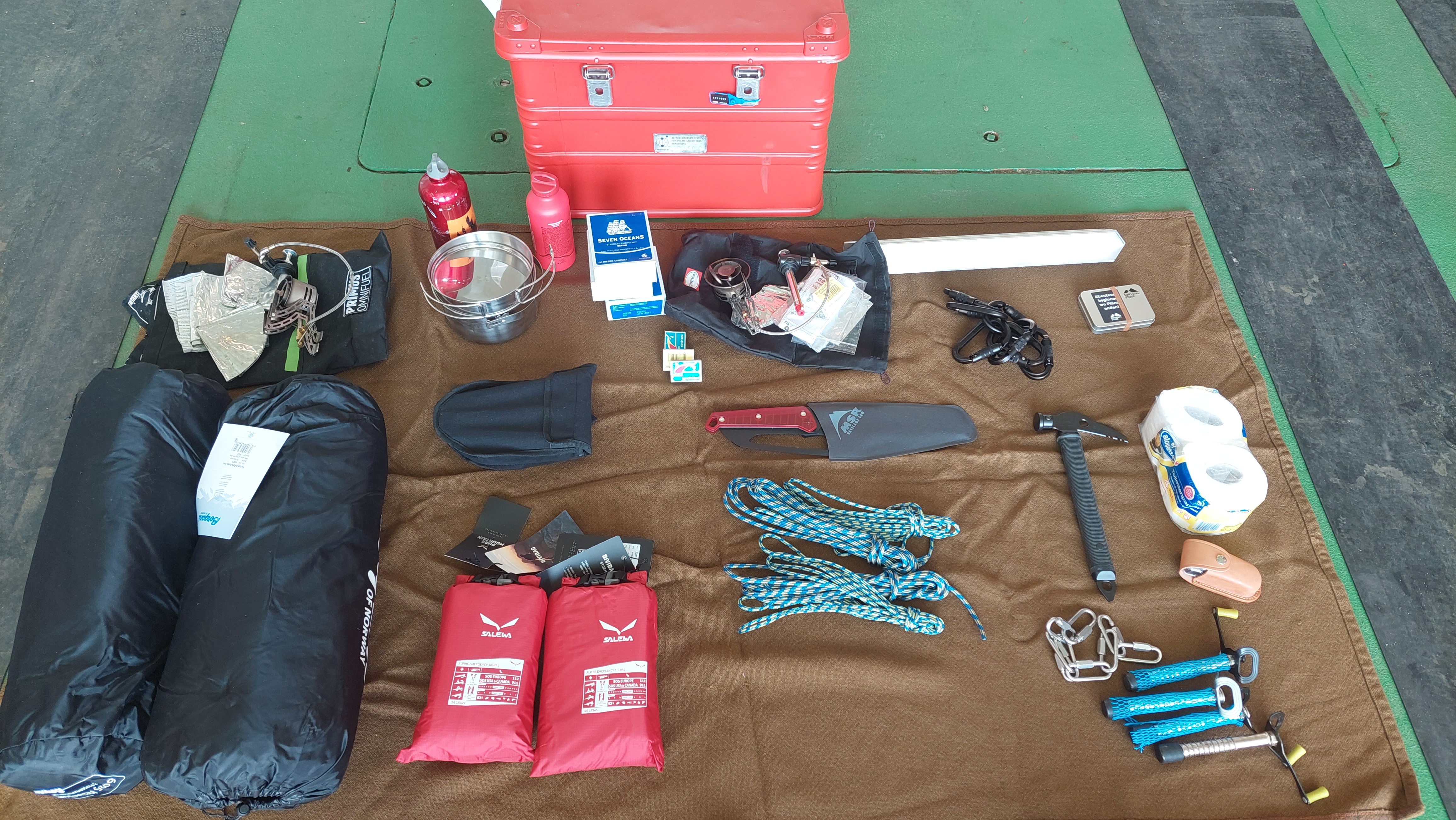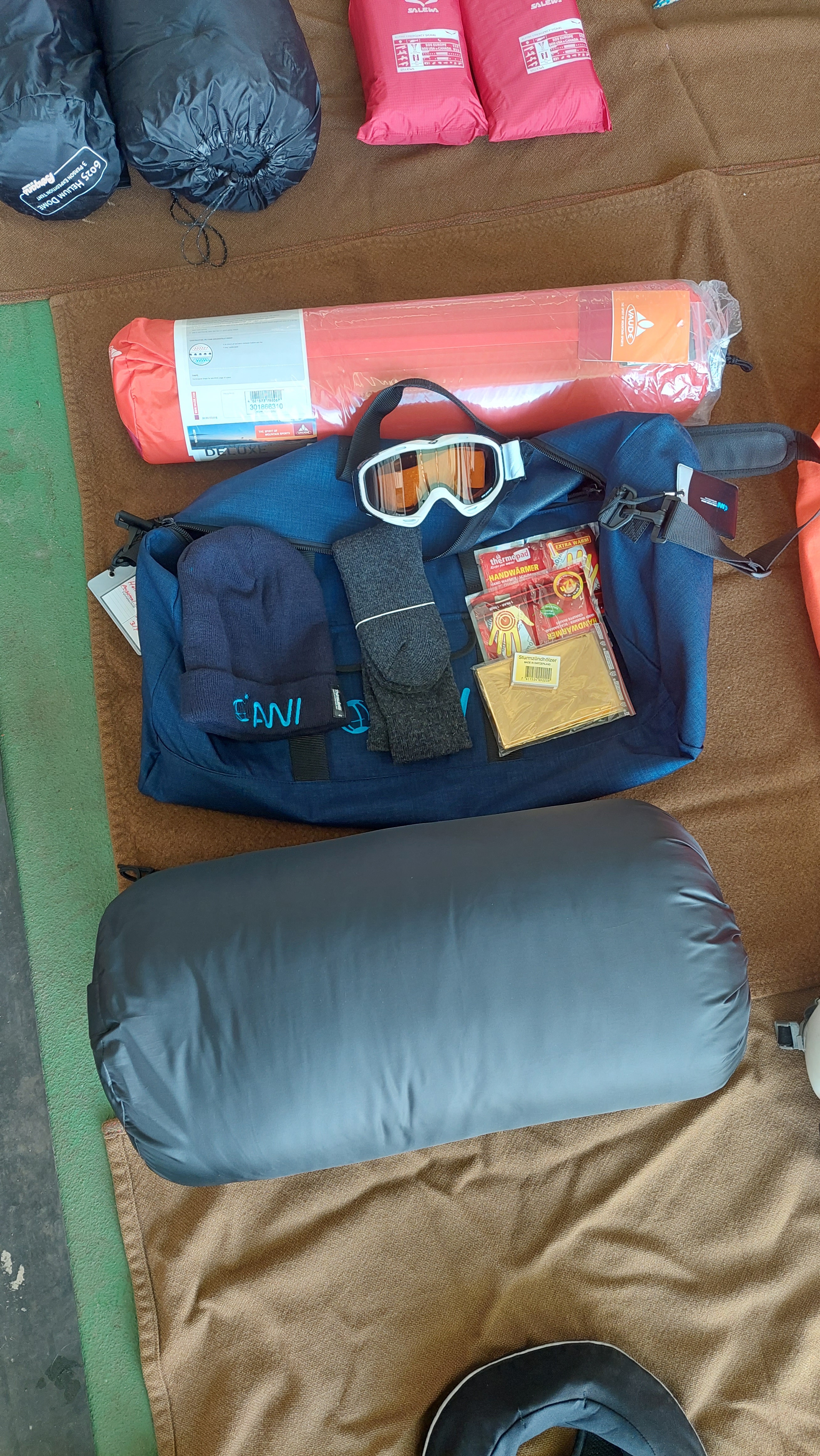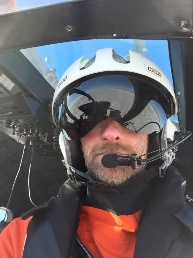Helicopters:
| Type |
Eingesetzte Hubschrauber
2 x BK117 - C1 |
| Manufacturer | Bölkow Kawasaki |
| Engines | 2 x Arriel 1E2 |
| engines, 700PS |
| each | |
| Maximum take-off weight | 3350 kg |
| Number of passengers | max. |
5 |
| Speed | 125 nm/h (225km/h) |
| Range | 240nm (430km) |
95 nm
2 Piloten; 2 Techniker
Hubschrauber BK117 - Polarstern (Foto Heliservice)
Für das zur Verfügung stellen und den Betrieb der Helikopter ist die Firma Heliservice International aus Emden verantwortlich.
Es gilt die deutsche Gesetzgebung zur Offshorefliegerei. Aufsichtsführende Behörde ist das Luftfahrtbundesamt, welches wiederum u.a. EU-Recht der europäischen Luftfahrtbehörde EASA umsetzt.
Hubschrauberbetrieb an Bord
Der Hubschrauberbetrieb ist in den „Standard Operation Procedures - SOP" des Helikopterbetreibers rechtsverbindlich geregelt. Die vom Luftfahrt Bundesamt abgenommenen Unterlagen können an Bord beim Flugbetriebsleiter eingesehen werden.
Im Helikopter müssen aus Sicherheitsgründen immer Helme getragen werden und bei Flügen über offenem Wasser Überlebensanzüge mit selbstaufblasender Rettungsweste. Die Ausrüstung ist an Bord verfügbar.
Pro Person wird ein Überlebensset mitgenommen, pro 4 Personen ein Zelt. Die Ausrüstung ist an Bord verfügbar.
Die Ausrüstung ist gewichtsoptimiert und auf Abwesenheiten von max. 12h ausgelegt. Es befindet sich kein Essen in der Ausrüstung!
Ein Helikopter bleibt aus Sicherheitsgründen an Bord, bzw. in unmittelbarer Nähe des Schiffes ( < 3 nm), während der andere im Einsatz ist.
Der Helikopter wird von einem Piloten geflogen, der andere Pilot besetzt den "Tower" an Bord.
Theoretisch stehen bis zu 7 Sitzplätze für Passagiere zur Verfügung. Es können aber nur maximal 6 Passagiere plus Pilot eigesetzt werden, damit der andere Helikopter im Notfall alle 7 verunfallten Personen bergen kann. Die Bergung aller Personen auf dem Eis muss mit einem einzigen Flugeinsatz möglich sein, da z.B. bei plötzlicher Wetterverschlechterung, einem Absturz, brechender Eisscholle oder Eisbärenangriff keiner zurückbleiben darf.
Es gibt aus den oben genannten Gründen nur eine Gruppe, die per Helikopter zum Einsatz kommt.
Die Standbyzeit des Helikopters vor Ort beträgt maximal 45 Minuten. Bei längeren Aufenthalten fliegt der Helikopter zum Schiff zurück und holt die Gruppe zu einem späteren Zeitpunkt wieder ab. Eine Ausrüstung mit GPS und Iridiumtelefon ist dann verpflichtend. Zwei Iridiumgeräte steht an Bord beim Kommunikationselektroniker zur Verfügung.
Vor jedem Flug gibt es ein gemeinsames Treffen mit Fahrtleiter, Kapitän, Pilot und Bordmeteorologen, um den jeweiligen Flugplan zu besprechen. Die Entscheidung, ob geflogen werden kann oder nicht, muss einstimmig getroffen werden, das letzte Wort hat immer der Pilot. Der Flugauftrag mus schriftlich vorliegen.
Während des Einsatzes kann der Pilot jederzeit die Entscheidung treffen, den Einsatz abzubrechen. Dieser Entscheidung ist zwingend und umgehend Folge zu leisten.
Wenn z.B. aus technischen Gründen nur ein Hubschrauber einsatzbereit ist, darf der andere Hubschrauber nur bis zu einem Radius von 10 nm um des Schiff eingesetzt werden, damit im Notfall eine Rettung in angemessenenr Zeit durch das Schiff möglich ist.
Grundsätzlich ist bei allen Einsätzen damit zu rechnen, das die Gruppe von 6 Personen z.B. aus Wettergründen nicht wie gewünscht abgeholt werden kann. Die Position des Aussetzortes muss immer so gewählt werden, dass eine Rettung mit dem Schiff möglich ist.
Gegegebenenfalls müssen vom Helikopterbetreiber rechtzeitig vor dem Expeditionsbeginn Start- und Landeerlaubnisse eingeholt werden. Melden Sie Ihre Flugwünsche daher sehr frühzeitig vor dem Expeditionsbeginn beim Expeditionsleiter an.
Beispiele für Beladungen und Reichweite:
(je 95kg)
Reichweite
(nm)
(kg)
(nm)
Die für Ihren speziellen Einsatz geltenden Werte für Zuladung und Außenlasten erfahren Sie an Bord vom Flugbetriebsleiter.
| ; 278 l/h fuel consumption | |
| Operating range around the ship | max. 80nm (= abt.17h rescuetime by Polarstern in icecovered waters) |
| Staff | 2 pilots; 2 technicians |
| Tasks | emergency, ice reconnaissance, scientific services, transport |
Helicopter BK117 - Polarstern
(Photo Northern Helicopter)
Helicopters are provided by the shipping company F. Laeisz and operated by Northern Helicopter in Emden, Germany.
The German aviation law for offshore flying is applied.
Supervisory authority is the Federal Aviation Office (LBA-Luftfahrtbundesamt) which implements the EU law of the European Aviation Safety Agency (EASA).
Size of Cargo Compartment BK117 (Northern Helicopter)
| View file | ||||
|---|---|---|---|---|
|
Check list CA-EBS Training (Windguard
Overview helioperations
(M. Siebenhüner)
Survival tent per 4 persons. (Heliservice)
Survival bag per person. (Heliservice)
lifevest per person. (Heliservice
)
Helmet (Pict.:M.Hirsekorn)
Maße Cargo Compartment BK117






